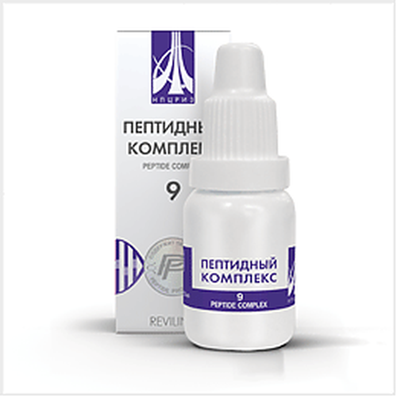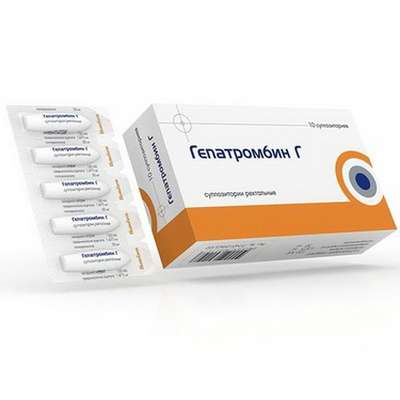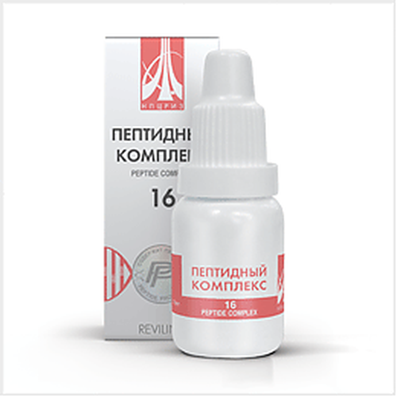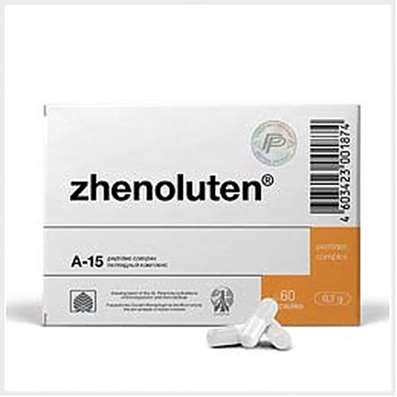Instruction for use: Espumisan
I want this, give me price
Active substance Simethicone
ATX Code A03AX Other drugs for functional gastrointestinal disorders
Pharmacological group
carminative
Nosological classification (ICD-10)
K30 Dyspepsia
Fermentation dyspepsia, Hyperacid indigestion, Putrefactive indigestion, Dyspepsia, Dyspepsia, Dyspepsia of nervous origin, Dyspepsia in pregnant women, Dyspepsia fermentation, Dyspepsia putrefactive, Dyspepsia medication, Dyspepsia due to diseases of the digestive system, Dyspepsia due to impaired motility of the gastrointestinal tract, Dyspepsia due to unusual food or overeating, Dyspeptic phenomena during pregnancy, Dyspeptic Syndrome, Gastric indigestion, Delayed emptying of the stomach, Delayed digestion, Idiopathic indigestion, Acid dyspepsia, Disturbance of the upper GI tract motility, Indigestion, Nervous indigestion, Non-ulcer dyspepsia, The feeling of heaviness in the stomach after eating, Postprandial functional dyspepsia, The processes of fermentation in the intestine, Stomach upset, Gastrointestinal disorders, Digestive disorders, Disorders from the digestive tract, Stomach upset, Indigestion disorder, Indigestion in infants, Symptoms of dyspepsia, The syndrome of putrefactive dyspepsia, Syndrome of putrefactive dyspepsia in infants, Syndrome of insufficiency of digestion, Syndrome of nonulcer dyspepsia, Toxic indigestion, Functional dyspepsia, Functional indigestion, Chronic indigestion, Chronic episodes of dyspepsia, Essential dyspepsia, Dyspeptic disorder
K94 * Diagnosis of gastrointestinal diseases
Liver-spleen scan is, The visualization of the liver using invasive methods, Isotope hepatoscintigram, Celiocentesis, examination of the liver, Magnetic resonance imaging of the liver, Computed tomography of the liver, Esophageal manometry, Anoscopy, Visualization of biliary tract, liver ultrasound visualization, Gastroscopy,degassing bowel before diagnostic studies, degassing intestine before X-rays, Diagnosis of the gastrointestinal tract, Diagnosis of bleeding from the small intestine, Diagnosis of focal lesions of the liver, Diagnosis secretory capacity and gastric acid-function, Diagnostic procedures on the colon, duodenal intubation, duodenoscopy, Instrumental examinations of the abdominal cavity, Intraoperative cholangiography, Irrigoscopy, The study of gastric secretion, GI study, Investigation of acid-forming function of the stomach, The study of gastric secretory function,Colonoscopy, Monitoring the effectiveness of lithotripsy, Determining the degree of hypersecretion of duodenal ulcer, Preparation for diagnostic tests, Preparing to X-ray and instrumental methods of investigation of the abdominal cavity, Preparing to X-ray and ultrasound of the abdominal cavity, Preparing to X-ray or endoscopic gastrointestinal investigations, Preparing to X-ray study of the gastrointestinal tract with contrast, Preparing to X-ray study of the gastrointestinal tract with barium, Preparing to X-ray examination and ultrasound of the abdomen, Preparing to X-ray examination and ultrasound of the abdomen, Preparation for ultrasound and X-ray examination of the abdominal cavity, Preparation for endoscopic examination of the lower large intestine,Preparation for endoscopic or X-ray examination of the lower intestine, Prepare to lower GI endoscopy, Preparation of the colon to the instrumental and radiological investigations, Preparation of the colon to the x-ray and endoscopy, sigmoidoscopy, rectoscopy, GI Radiography, X-ray diagnosis of esophageal achalasia,Radiology gastrointestinal diseases, Radiology of the digestive tract, Rentgenocontrast study biliary tract, Rentgenocontrast study GI, X-ray diagnosis of the gastrointestinal tract, X-ray gastrointestinal studies, X-ray examination of the duodenum and gall bladder, X-ray examination of the stomach, X-ray examination of the biliary tract and gall bladder, X-ray study of the gastrointestinal tract, X-ray examination of the esophagus, retrograde cholangiopancreatography, Endoscopic Retrograde pankreatoholangiorentgenografiya, Sonography of the digestive tract, hepatosplenography, Ultrasonography of the abdomen, Functional X-ray diagnostics for diseases of the stomach,Functional X-ray diagnosis with bowel diseases,cholangiography, Cholangiography in cholelithiasis, cholangiopancreatography, cholecystography,esophagoscopy, Endoscopic retrograde pancreato, Endoscopic retrograde cholangiopancreatography, Endoscopic intervention, Endoscopic examinations of the digestive system, Endoscopic examination of the lower large intestine, GI Endoscopy, endoscopy, ERCP, Panendoskopiya
R14 Flatulence and related conditions
abdominal distention, flatulence, pronounced flatulence, Gases in the postoperative period, degassing bowel before diagnostic studies, degassing intestine before X-rays, gas delay, Excessive formation and accumulation of gases in the digestive tract, brash, Flatulence, Flatulence with increased gas formation in the digestive tract, Flatulence in infants, Flatulence in newborns, Flatulence caused by fatty or unusual food, Flatulence caused by disease of the digestive tract, belching, The feeling of bloating, The feeling of fullness, Increased flatulence, The increased gas formation and accumulation of gases in the digestive tract, Fullness in the epigastrium, Feeling of fullness, The feeling of heaviness in the stomach, Flatulence in the gastrointestinal tract, Increased production and accumulation of gases in the digestive tract
T55 Toxic effect of soaps and detergents
Poisoning with detergents, Intoxication with detergents, Acute poisoning with detergents, Surfactant poisoning, Poisoning with synthetic detergents
Z100 * CLASS XXII Surgical practice
Abdominal surgery, adenomectomy, Amputation, Coronary angioplasty, Angioplasty of the carotid arteries, Antiseptic skin treatment for wounds, Antiseptic Hand, Appendectomy, atherectomy, Balloon coronary angioplasty, Vaginal hysterectomy, The coronary bypass, Interventions in the vagina and cervix, Interventions on the bladder, Intervention in the mouth, Restoration and reconstructive surgery, Hand hygiene of medical personnel, Gynecologic surgery, Gynecological intervention, Gynecological surgery, Hypovolemic shock during operations, Disinfection of purulent wounds, Disinfection of wounds edges, Diagnostic intervention, Diagnostic procedures, Cervical Diathermocoagulation, Long-surgery, Replacing the fistula catheters, Infection in orthopedic surgery, Artificial heart valve, cystectomy, Short-term outpatient surgery, Short-term operation, Short surgical procedures, Krikotireotomiya, Blood loss during surgery, Bleeding during surgery and in the postoperative period, Kuldotsentez, laser photocoagulation, laser coagulation, retinal laser coagulation, Laparoscopy, Laparoscopy in Gynecology, CSF fistula, Small gynecological operations, Small surgical procedures, Mastectomy and subsequent plastic, mediastinotomy, Microsurgical operations on the ear, Mukogingivalnye operation, suturing, Minor surgery, neurosurgical operation, Immobilization of the eyeball in ophthalmic surgery, testectomy, pancreatectomy, Perikardektomiya, The period of rehabilitation after surgery, The period of, convalescence after surgery, Percutaneous transluminal coronary angioplasty, Pleural thoracentesis, Pneumonia postoperative and posttraumatic, Preparation for surgical procedures, Preparation for surgery, Preparation of the surgeon's hands before surgery, Preparation of the colon for surgical procedures, Postoperative aspiration pneumonia in neurosurgical and thoracic surgery, Postoperative nausea, Postoperative bleeding, postoperative granuloma, postoperative shock, The early postoperative period, myocardial revascularization, Radiectomy, gastric Resection, bowel resection, uterine Resection, liver Resection, enterectomy, Resection of part of the stomach, Reocclusion of the operated vessel, Bonding tissues during surgical procedures, Removal of sutures, Condition after eye surgery, Condition after surgery, Condition after surgery in the nasal cavity, Condition after gastrectomy, Status after resection of the small intestine, Condition after tonsillectomy, Condition after removal of the duodenum, Condition after phlebectomy, Vascular surgery, Splenectomy, Sterilization of surgical instruments, Sterilization of surgical instruments, sternotomy, Dental surgery, Dental intervention in periodontal tissues, strumectomy, Tonsillectomy, Thoracic surgery, total gastrectomy, Transdermal intravascular coronary angioplasty, Transurethral resection, Turbinektomiya, Removal of a tooth, cataract surgery, Removal of cysts, tonsillectomy, Removal of fibroids, Removing the mobile primary teeth, Removing polyps, Removing broken tooth, Removal of the uterus body, Removal of sutures, Urethrotomy, Fistula likvoroprovodyaschih ways, Frontoetmoidogaymorotomiya, Surgical infection, Surgical treatment of chronic limb ulcersm, Surgery, The surgery in the anal area, The surgery on the colon, Surgical practice, The surgical procedure, Surgical interventions, Surgery on the gastrointestinal tract, Surgical procedures on the urinary tract, Surgical procedures on the urinary system, Surgical intervention of the genitourinary system, Surgical procedures on the heart, Surgical manipulation, surgery, Surgery on the veins, Surgical intervention, Vascular surgery, Surgical treatment of thrombosis, cholecystectomy, Partial gastric resection, transabdominal hysterectomy, Percutaneous transluminal coronary angioplasty, Percutaneous transluminal angioplasty, Coronary artery bypass, tooth Extirpation, Extirpation of milk teeth, pulpectomy, pulsative cardiopulmonary bypass, tooth Extraction, teeth Extraction, cataract extraction, Electrocoagulation, endourological intervention, episiotomy, Etmoidotomiya, Complications after tooth extraction
Composition and form of release
Capsules 1 caps.
simethicone 40 mg
auxiliary substances: methyl-4-hydroxybenzoate; glycerol; Dyes E104 and E110
in a blister of 25 pcs .; in a pack of cardboard 1, 2 or 4 blisters.
Emulsion for oral administration 5 ml
simethicone 40 mg
auxiliary substances: methyl-4-hydroxybenzoate; carboxymethylcellulose sodium salt; polysorbate 80; sodium cyclamate; silicon dioxide colloidal; saccharin sodium salt; Banana flavoring; hydrochloric acid; purified water
in bottles of dark glass of 100 ml; in the box 1 bottle.
Description of dosage form
Capsules: soft gelatin capsules of yellow color.
Emulsion: almost colorless turbid liquid.
pharmachologic effect
Pharmacological action - carminative.
Reducing the surface tension at the interface, complicates the formation and promotes the destruction of gas bubbles in the nutrient suspension and mucus of the gastrointestinal tract. Espumizan prevents the occurrence of image defects caused by gas bubbles during ultrasound and radiographic examination.
Pharmacokinetics
It is not absorbed from the digestive tract. Removed from the body in unchanged form.
Indications
Flatulence (including in the postoperative period), aerophagia, dyspepsia, Remkheld's syndrome, preparation for diagnostic studies of the abdominal cavity and small pelvis; intoxication with detergents (as a defoamer).
As an additive to the suspension of contrast agents for obtaining a double contrast image, as a defoamer for acute poisoning with detergents.
Contraindications
Hypersensitivity, intestinal obstruction.
Side effects
In some cases - allergic reactions to the components of the drug.
Interaction
Not installed.
Dosing and Administration
Inside, during or after a meal (if necessary, and at night). At a meteorism and sensation of overcrowding in a stomach to adults and children of 6-14 years - on 1-2 caps. or 1-2 tsp of emulsion 3-5 times a day, infants and young children - 1 ch.lozhke emulsion 3-5 times a day. To prepare for X-ray and ultrasound of the abdominal organs 1 day before the study - 2 caps. or 2 ch.lozhki emulsion 3 times a day and the day of study in the morning - 2 caps. or 2 parts of an emulsion. To obtain a double contrast image - 20-40 ml per 1 L of contrast suspension. When poisoning detergents - adults 50-100 ml, children - 10-50 ml, depending on the severity of poisoning. Infant and young children take an emulsion with food from a bottle or with a liquid after a meal.
special instructions
It does not contain sugar, it is possible to use diabetes mellitus and digestive disorders.
Possible use during pregnancy and breastfeeding.
Storage conditions
At a temperature not exceeding 30 ° C.
Keep out of the reach of children.
Shelf life
emulsion for oral administration 40 mg / 5 ml - 2 years.
capsules 40 mg - 3 years.
capsules 40 mg - 5 years.
Do not use after the expiry date printed on the package.

 Cart
Cart





